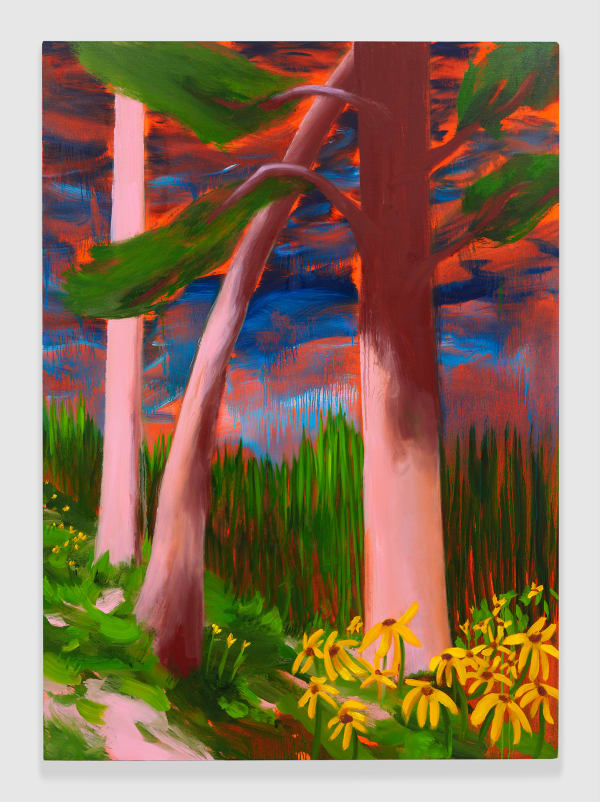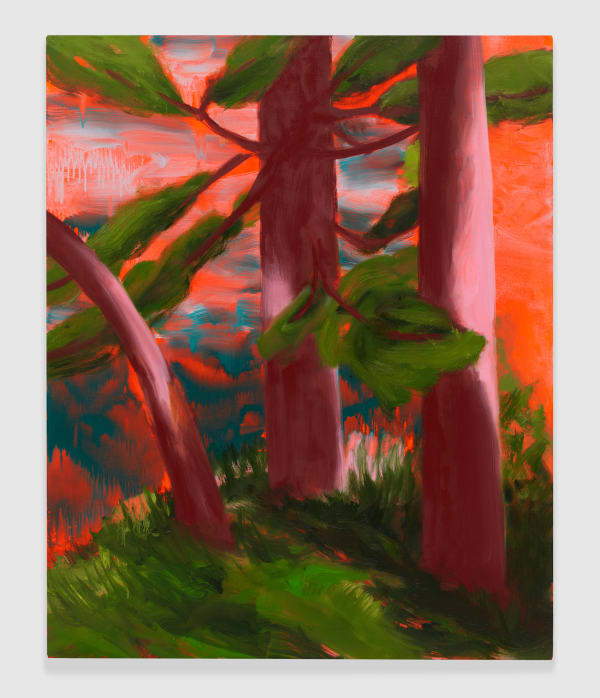Nicole Wittenberg: Tennis Elbow 125
-
Works
-
 Nicole WittenbergCat Spruce 2, 2023Oil on canvas84 x 60 in (213.4 x 152.4 cm)
Nicole WittenbergCat Spruce 2, 2023Oil on canvas84 x 60 in (213.4 x 152.4 cm) -
 Nicole WittenbergGloriosa Daisy 3, 2023Oil on canvas84 x 60 in (213.4 x 152.4 cm)
Nicole WittenbergGloriosa Daisy 3, 2023Oil on canvas84 x 60 in (213.4 x 152.4 cm) -
 Nicole WittenbergThe Endless Summer, 2023Oil on canvas60 x 48 in (152.4 x 121.9 cm)
Nicole WittenbergThe Endless Summer, 2023Oil on canvas60 x 48 in (152.4 x 121.9 cm) -
 Nicole WittenbergUpheaval, 2023Oil on canvas54 x 72 in (137.2 x 182.9 cm)
Nicole WittenbergUpheaval, 2023Oil on canvas54 x 72 in (137.2 x 182.9 cm) -
 Nicole WittenbergBuck Moon, 2023Oil on canvas60 x 48 in (152.4 x 121.9 cm)
Nicole WittenbergBuck Moon, 2023Oil on canvas60 x 48 in (152.4 x 121.9 cm)
-
-
Text
Sooner or later, it all boils down to what art at heart really is. One can dance around it, and one does, happily and desperately, like a blazing red giant circling a black hole faster and faster, hoping some supernova will come along to stave off the inevitable before it hits the event horizon, the ultimate point of no return.
Art's event horizon is trickier, lying in its meaning, its deepest source, its ultimate point. And it always shimmers off in the distance in Nicole Wittenburg's paintings. Horizons, one might argue, tend to do that. But these are invisible, lurking somewhere between the gesso and the oil, between the extra and the terrestrial, and between many other tautly conflicting forces at war and play in her work.
At first look, conflict isn't what leaps to mind. Wittenburg has a flair for crypsis, or camouflage, and her landscapes, foliage and floral compositions can at a glance seen magical, beautiful, decorative and occasionally even - horrors - tasteful. But before you go in for a taste, keep in mind Hawthorne's dark tale of Rappaccini's Daughter, the girl raised in a garden of poison flowers (like England's famous Alnwick Poison Garden). Yes, Wittenburg may know about crypsis, but she has a deep and abiding affinity for aposematism, camo's mortal enemy. Most people would call it warning coloration-highly visible in everything from colorful vipers to traffic cones.
In Wittenburg's hands, the aposematic slips in quietly in sulfur-tangerine skies, phallus-pink trees and bile- yellow foliage. It's delightful first and dangerous second, echoed by the fact that oil pigments like cadmium yellow and vermilion are often highly toxic themselves.
If one did not know better, one could call her a sci-fi nabi, a interplanetary post-impressionist out to challenge the escapist clichés of art by undermining
it with mankind's pretty, toxic artifice. Her paintings enter comme une faune but are toute fauve underneath, beauty and beast in a single package. As it should be-as it usually is. Wittenburg's work is to reconcile the two, which she does quite beguilingly and seemingly effortlessly.But the thing is, one does know better. It's a nice story, but Wittenburg doesn't simply set her lever on a single fulcrum, even if it's slippery, spherical one on which wobble many balances between abstraction and representation, light and dark, masculine and feminine, familiar and foreign, rational and instinctual and more.
This is because, as good as it looks and sounds, beneath all this, the ultimate point of art isn't about this. Not for the artist, for whom works end up functioning more like signposts than slideshows. Like so many things revealed by how life progressively unwinds, changing perspectives and focuses as it goes, Wittenburg's paintings walk in two different directions on two different tightropes that are not quite close together enough.
On the one hand, her works are representative of the artist's journey into adulthood, her studies and inoculations, acclaim and success, which in Wittenburg's case manifests as a voracious fascination with and encyclopedic knowledge of art history (and especially the long and complex histories of American and European landscape painting).
On the other hand, Wittenburg's work also represent another journey we all face -the turned-around journey backwards towards childhood.There are lots of inadequate words for this process-regression, the childish, the childlike. They're all stupid. None captures what Wittenburg experiences and brings to life-that inner knowledge that grows as we do that all of history and adulthood, even brilliance and talent, are not enough. At some point, we start to see that our desires to conquer, to explode outward into the world conceal an inner desire to collapse inward to the joys of youth, when the critique-free imagination could explore blissfully free of critique (from inside or out).
A famous expression is attributed to Picasso: "Every child is an artist-the problem is how to remain an artist once we grow up." But Voltaire tackled the problem 150 years earlier when in Candide he concluded, "Il faut cultiver notre jardin."
We must cultivate our own garden, create our own culture.That is the ultimate point of art; nothing more, in the end. How to define the sensibility that authored the strange gardens in these paintings? In the end, it's impossible to say. Call it the Wittenburg Uncertainty Principle; Nicole en abyme. The works are nothing if not ambiguous, and the artist is nothing if not ambivalent. Anyone who tells you different cannot be an artist.
David Colman
-
Installation Views





